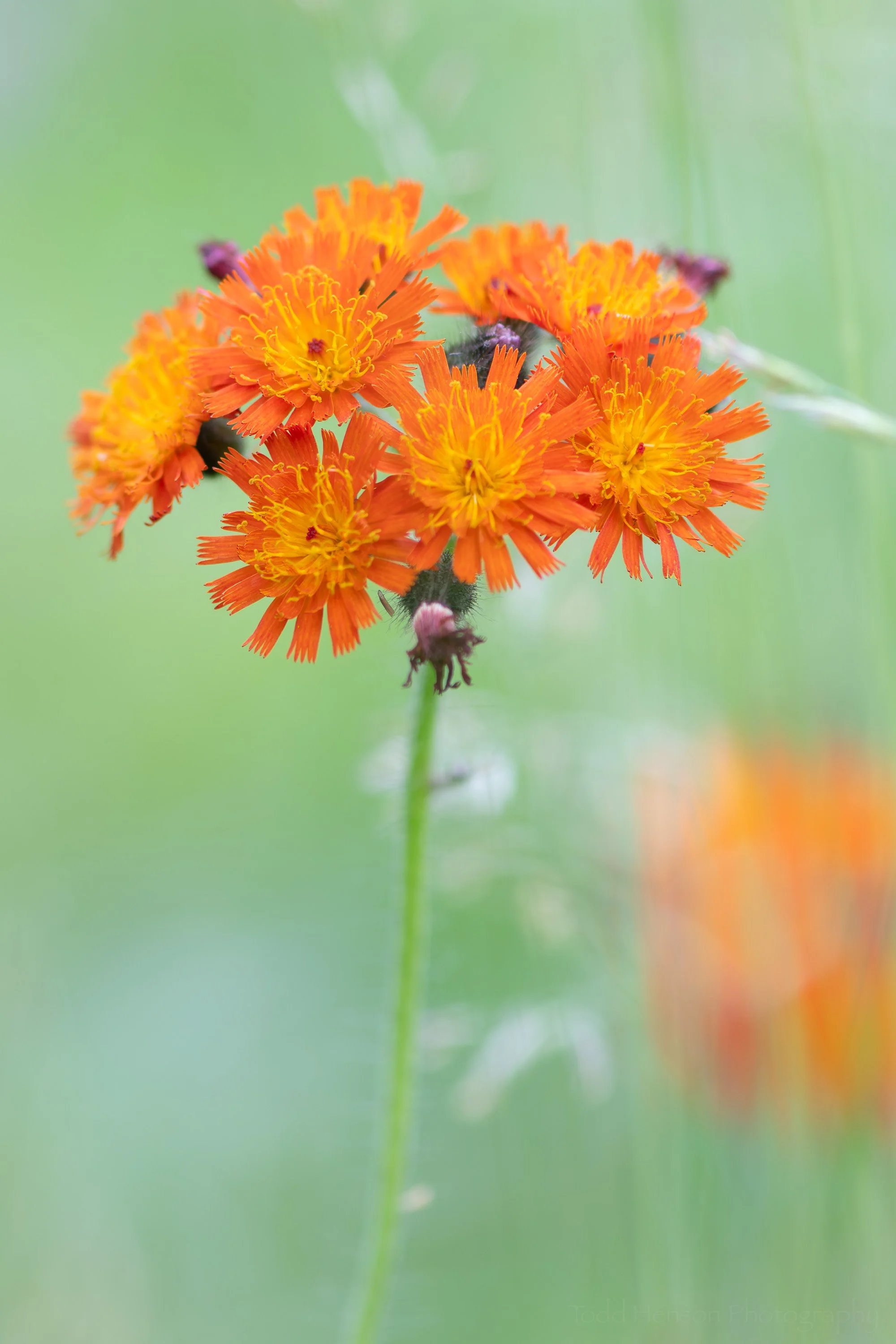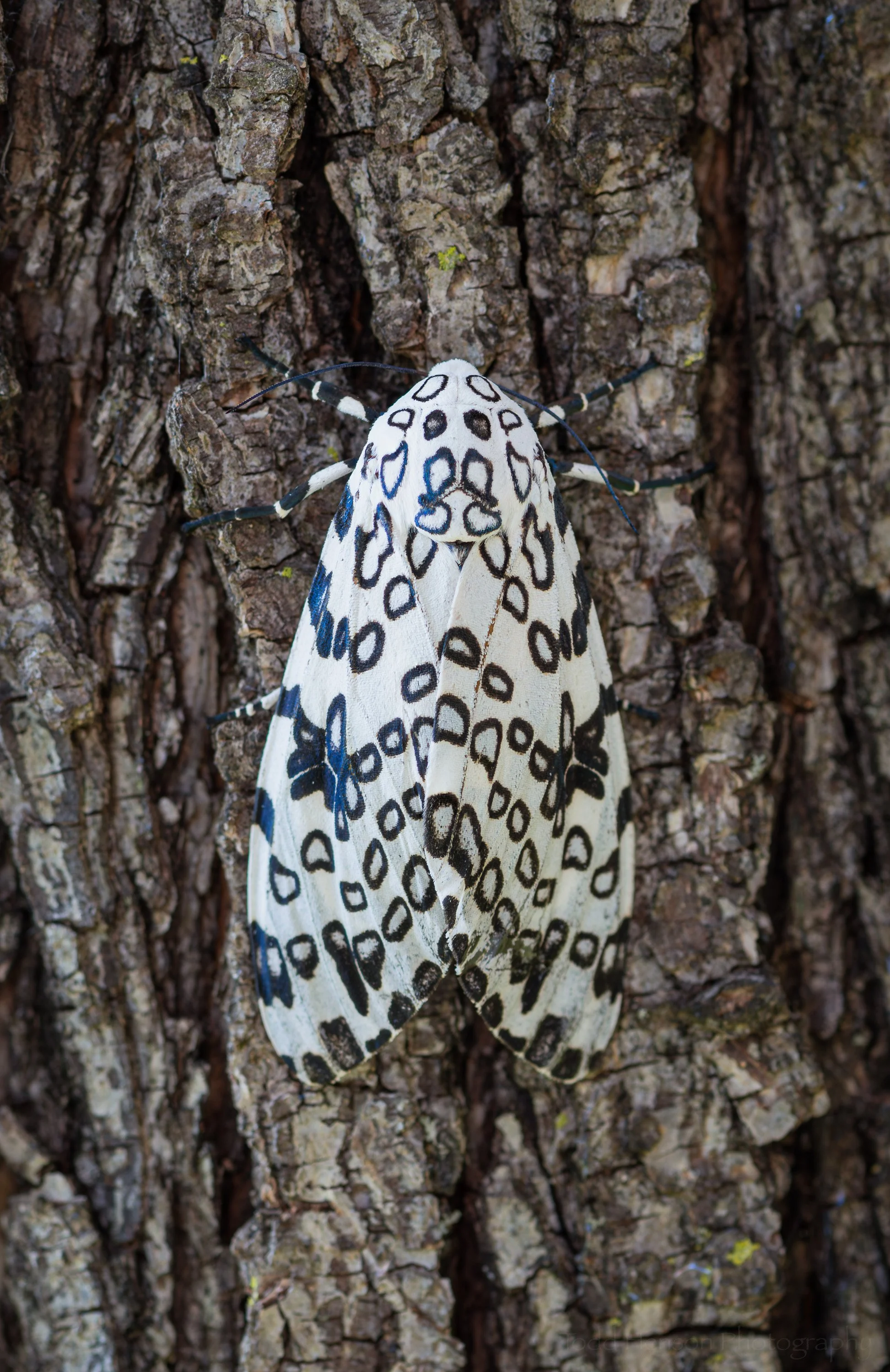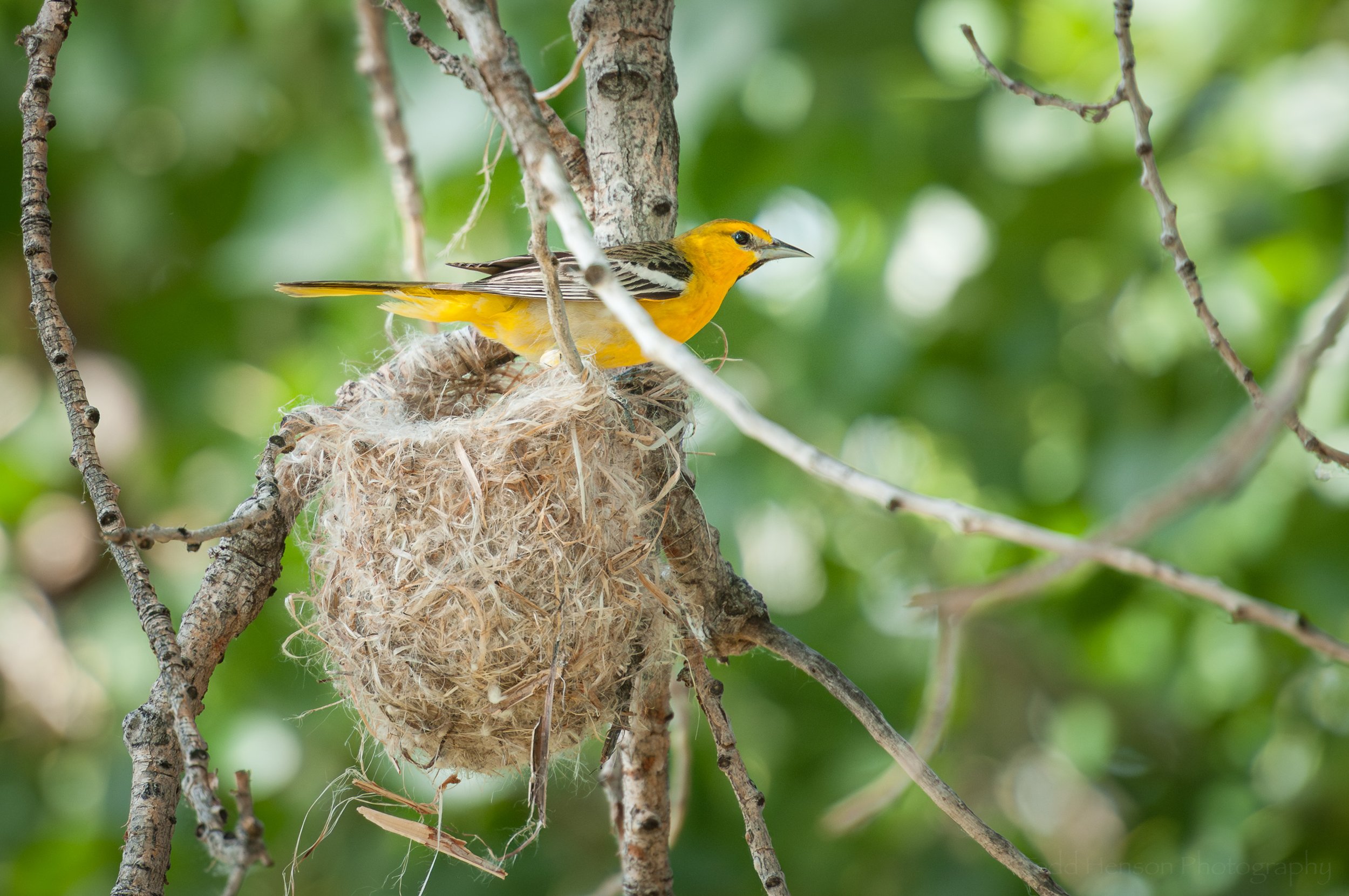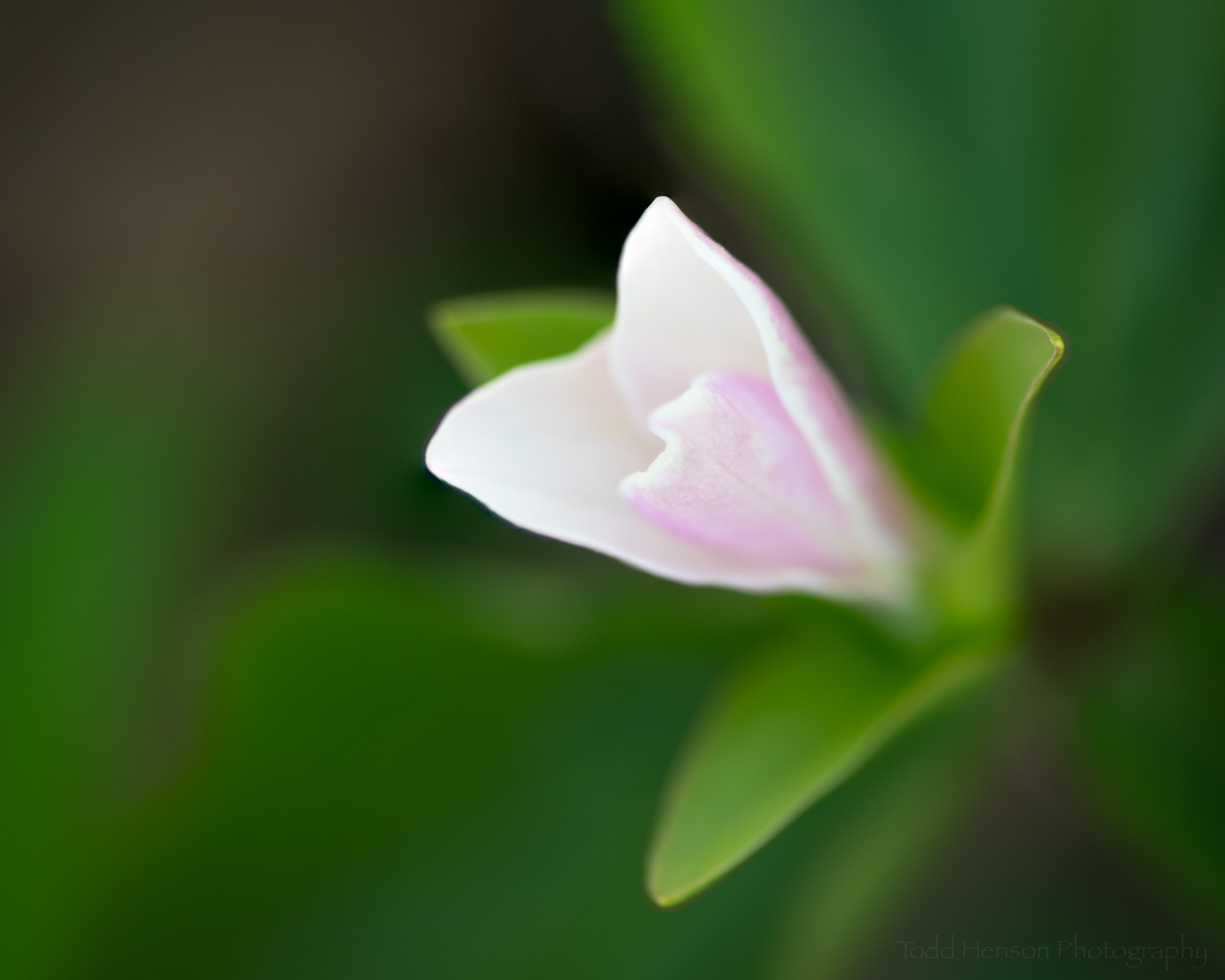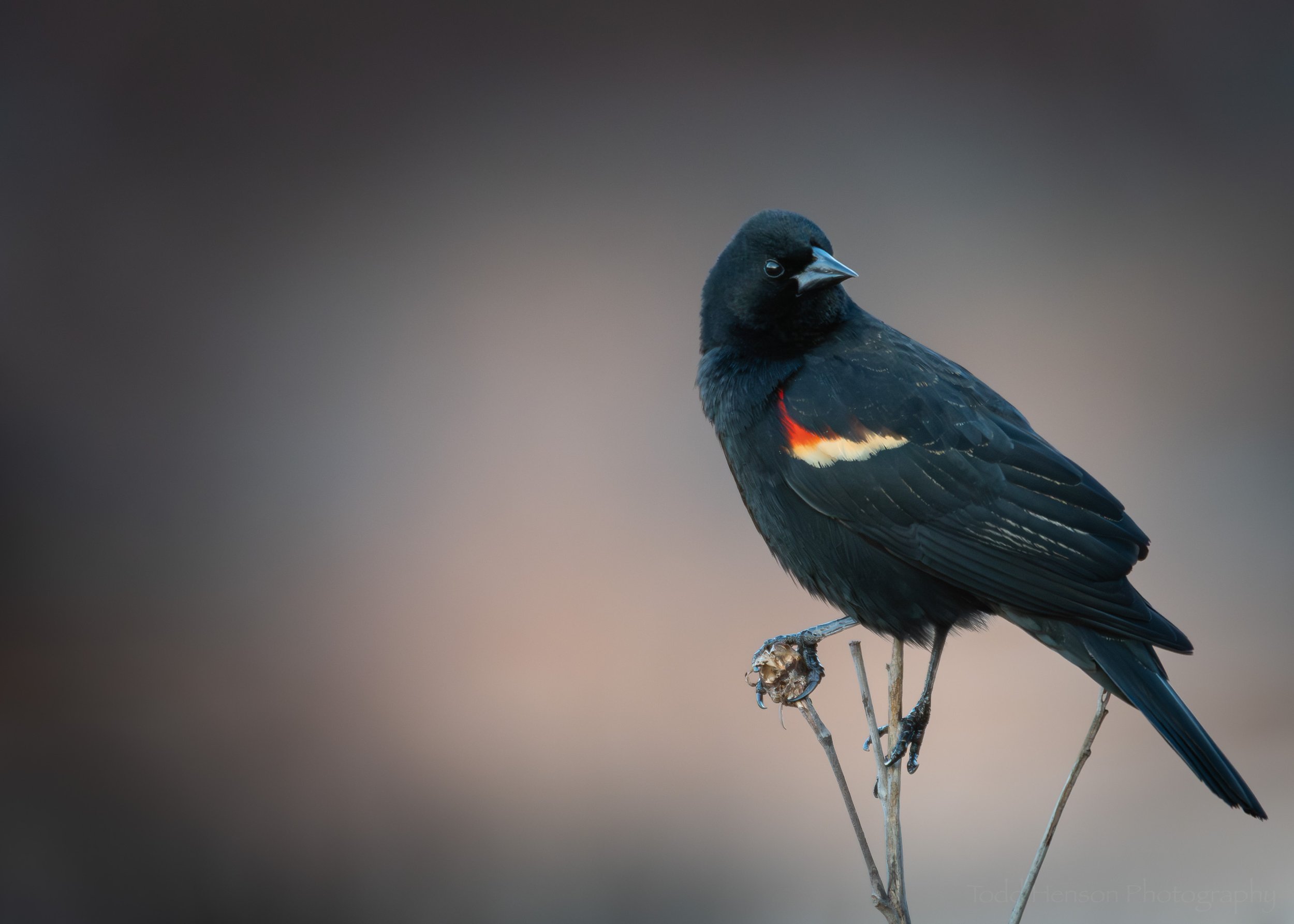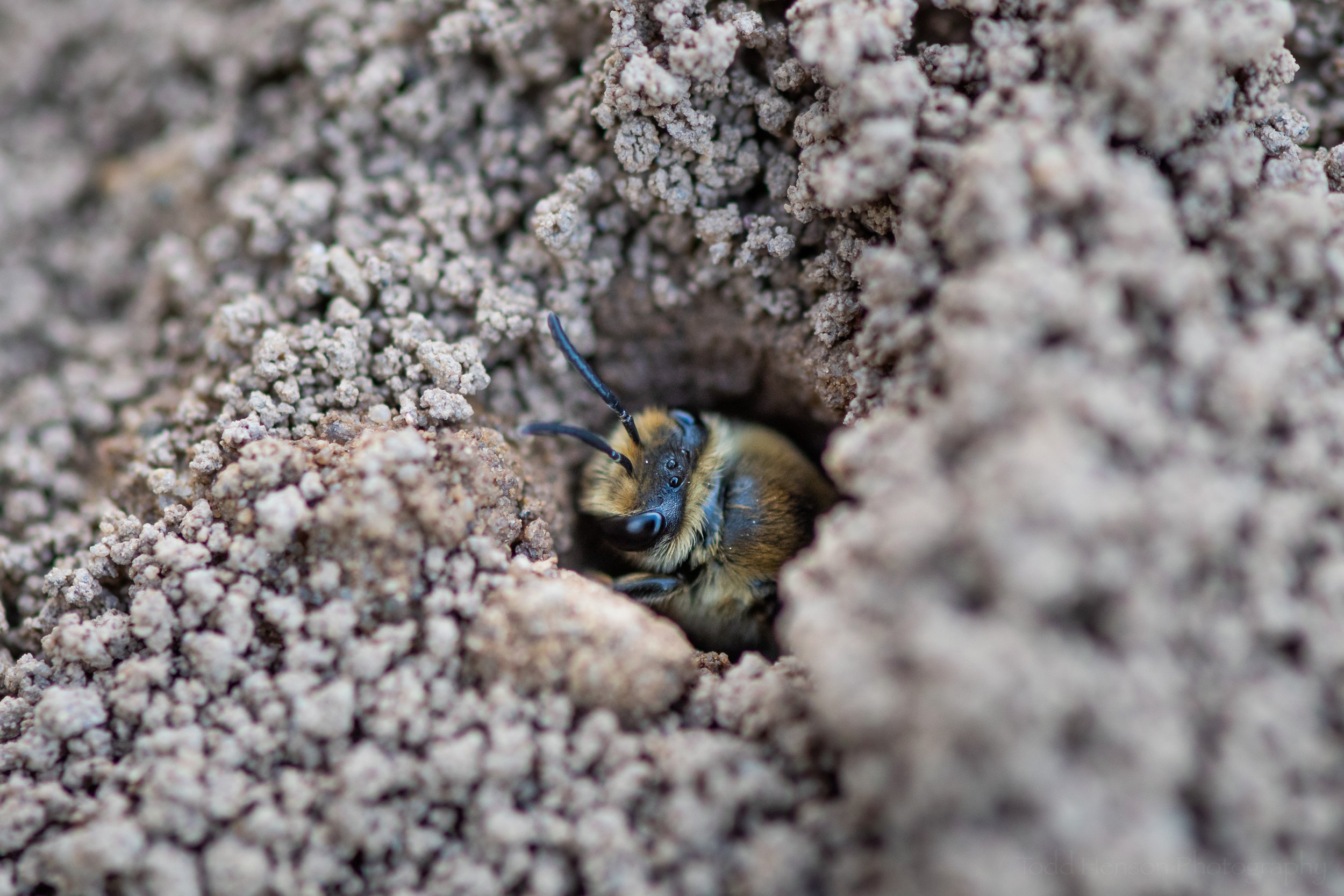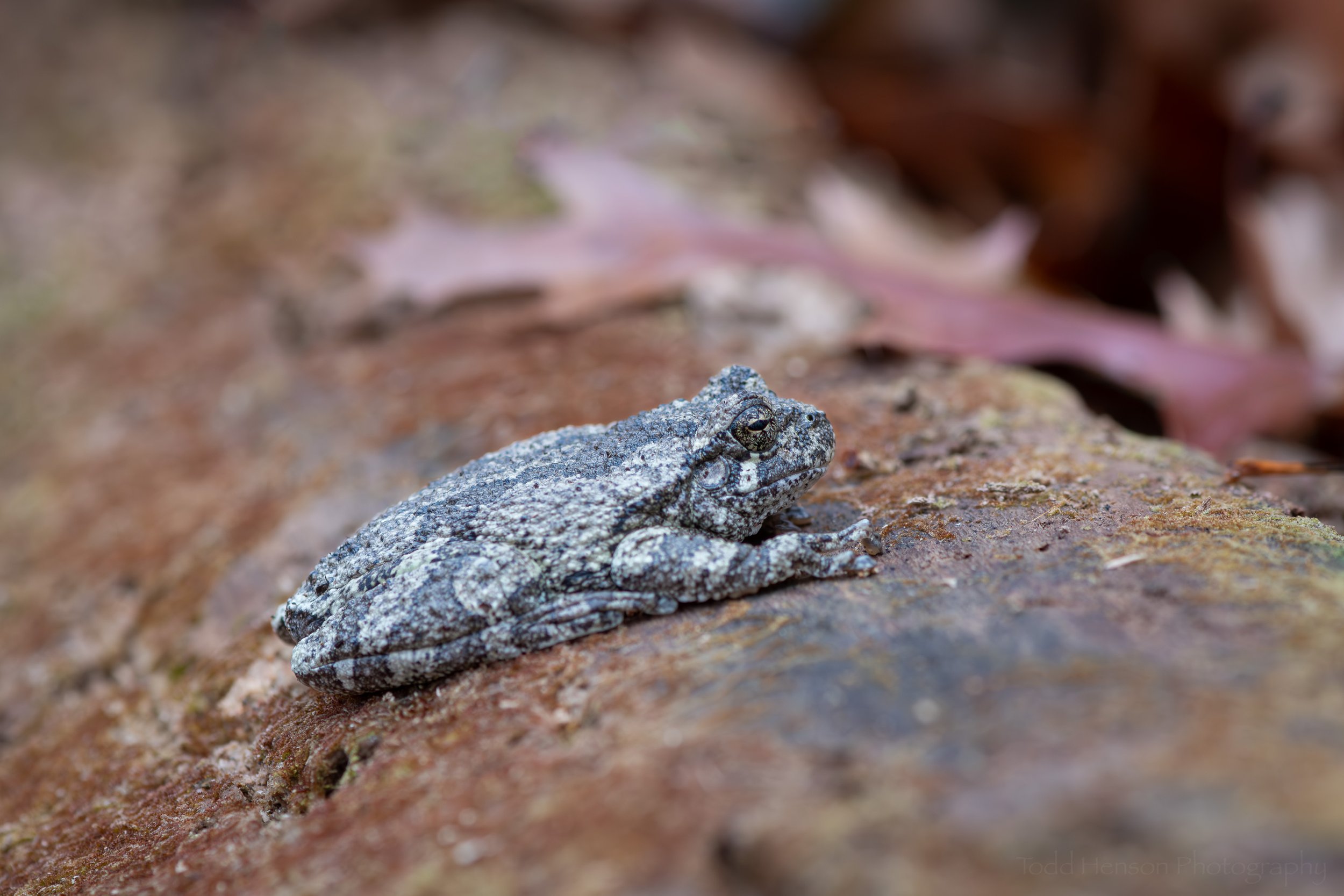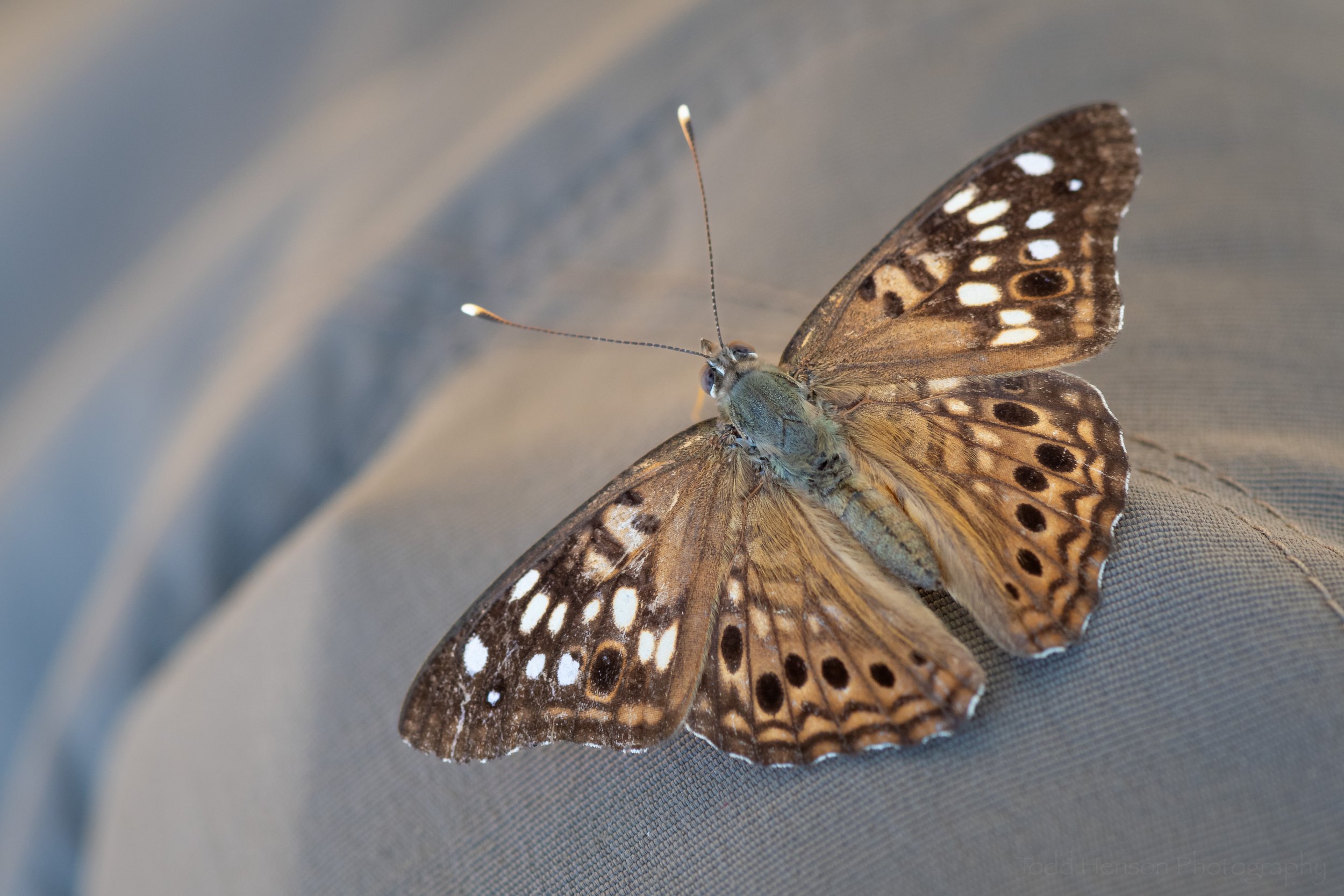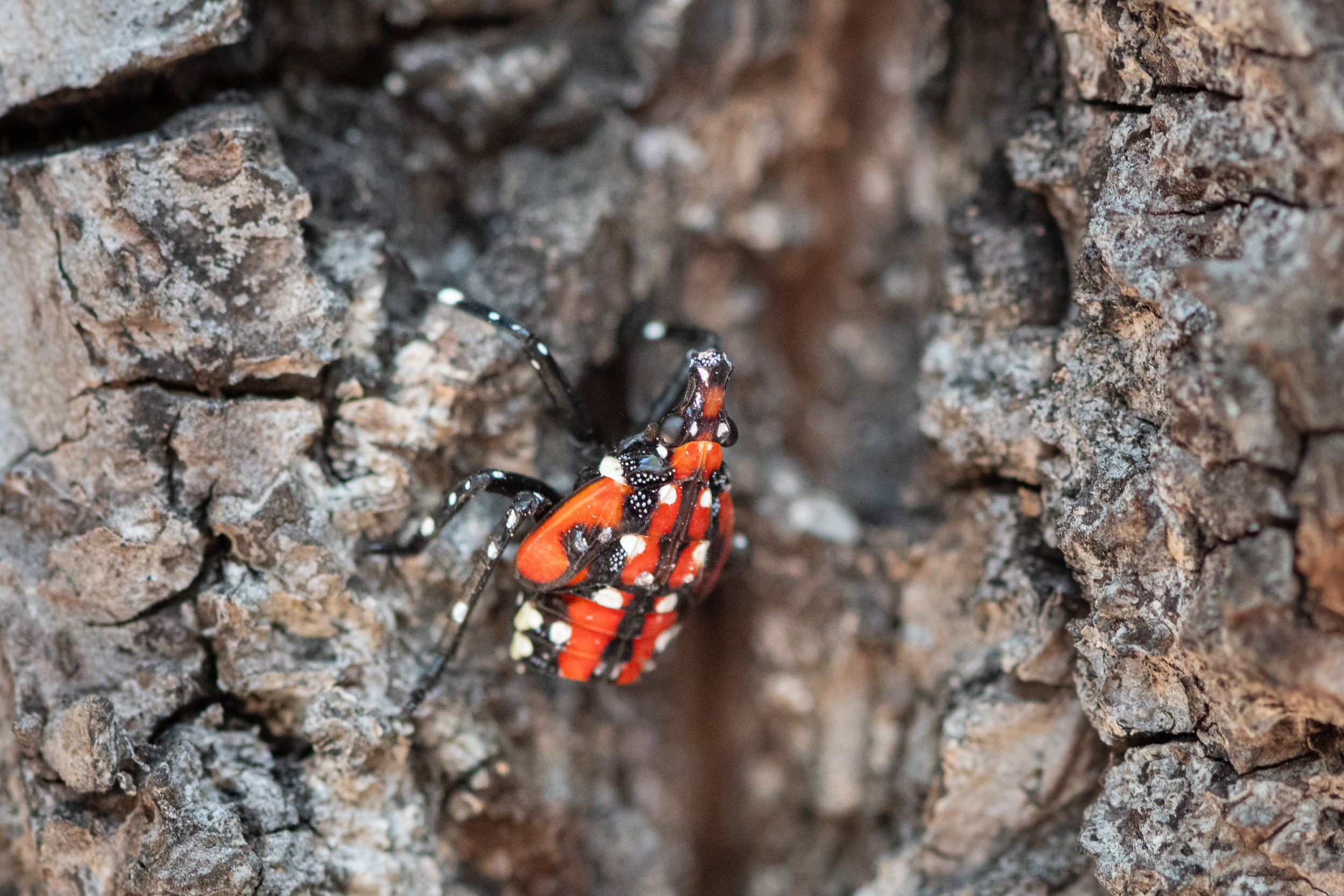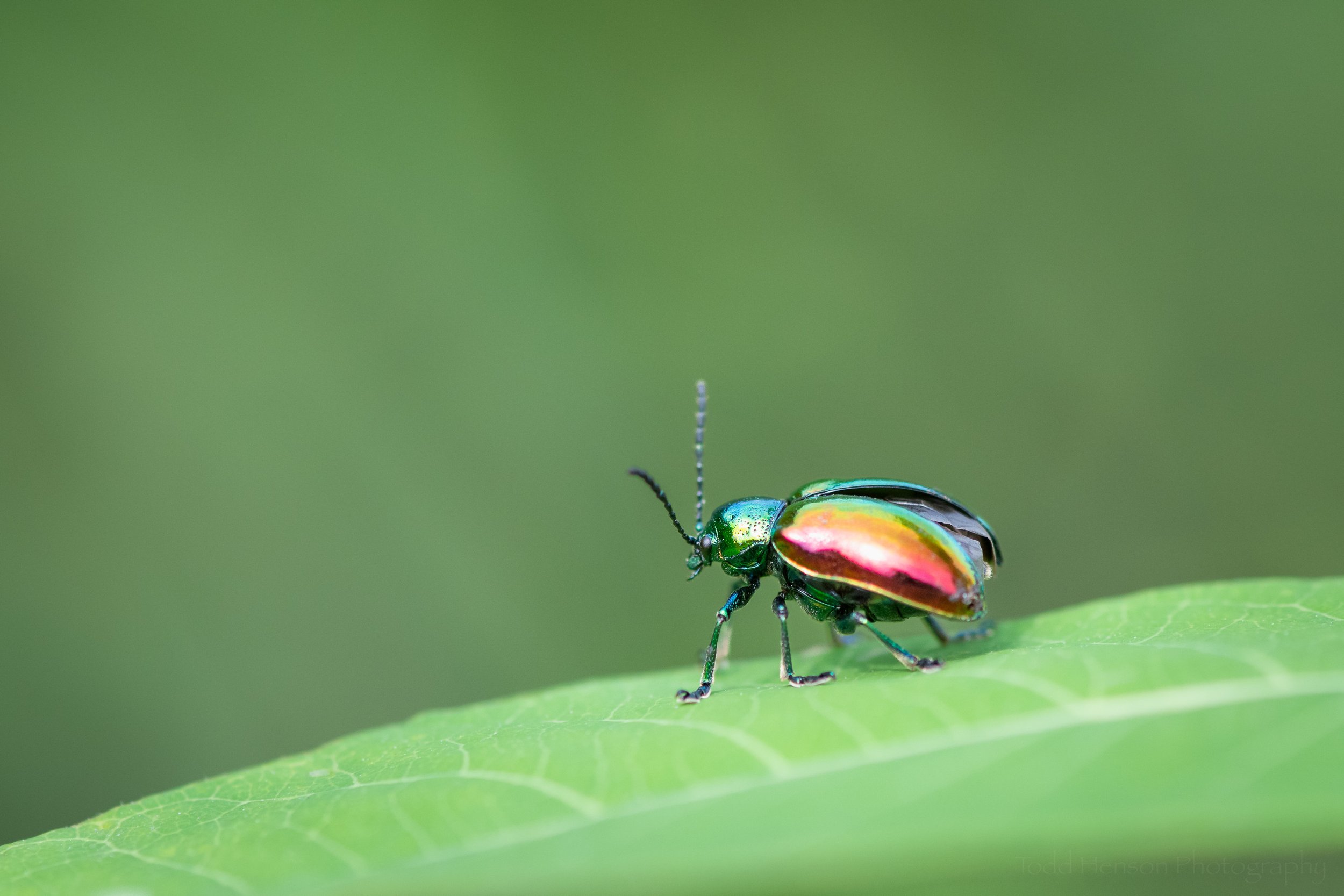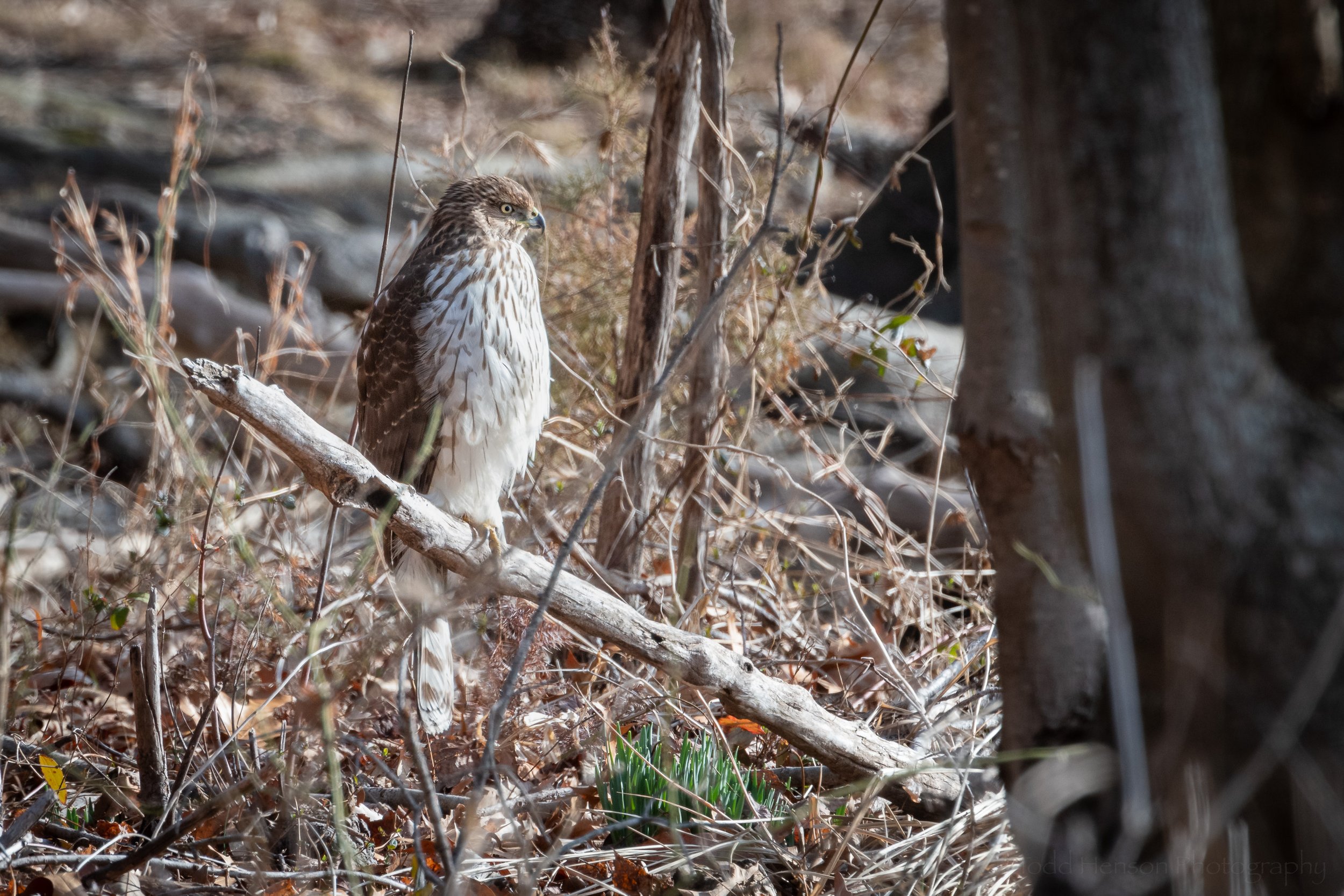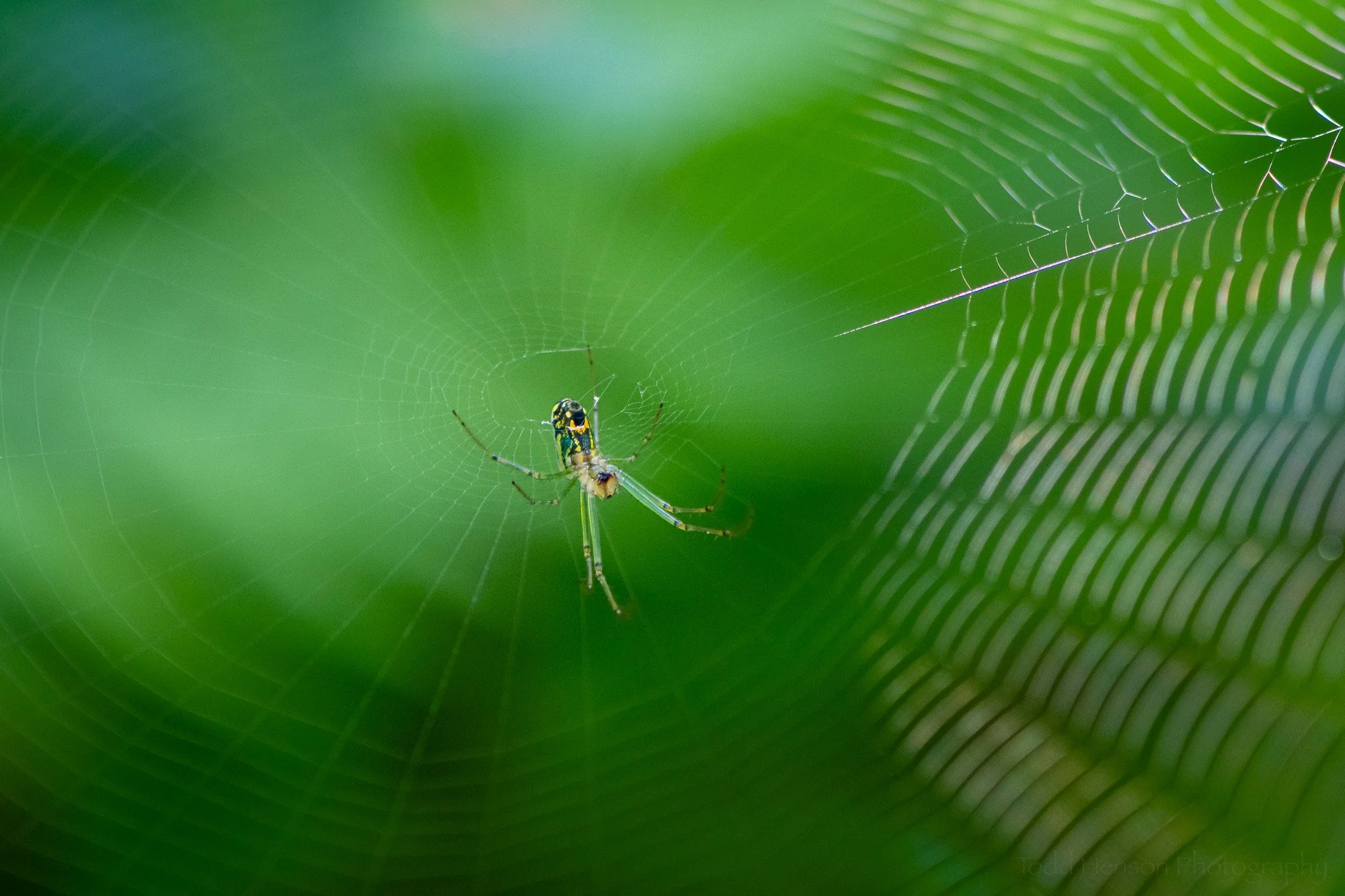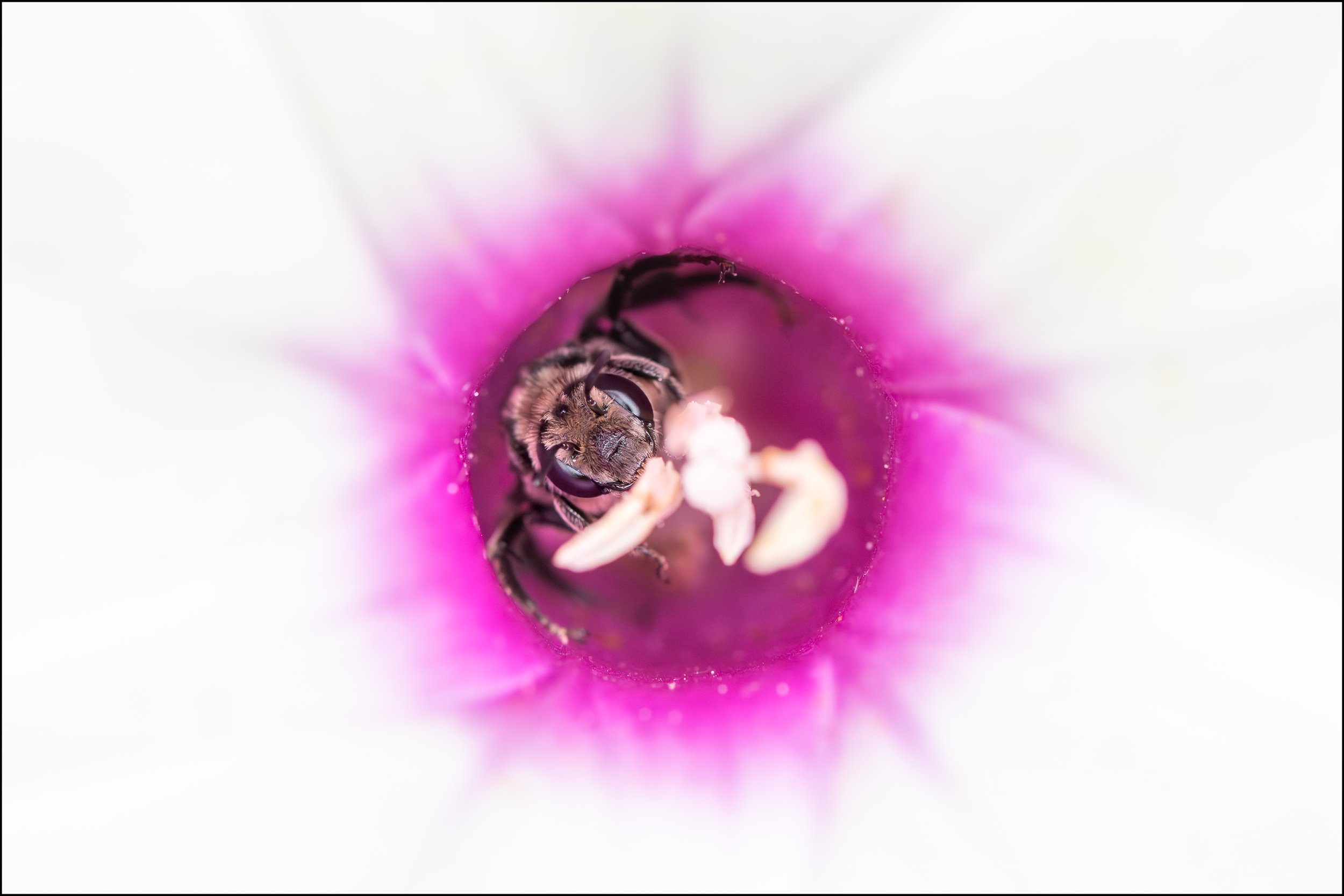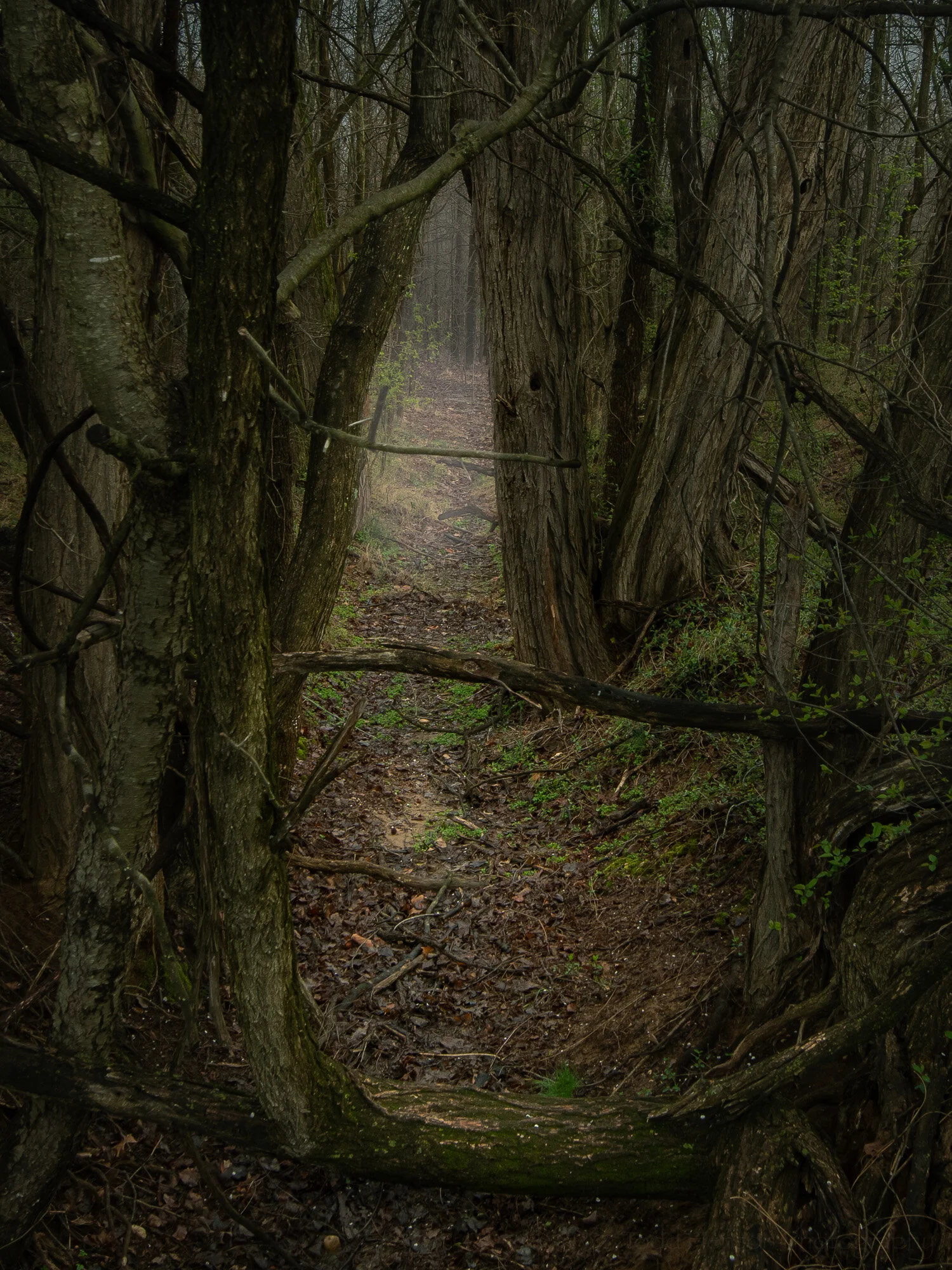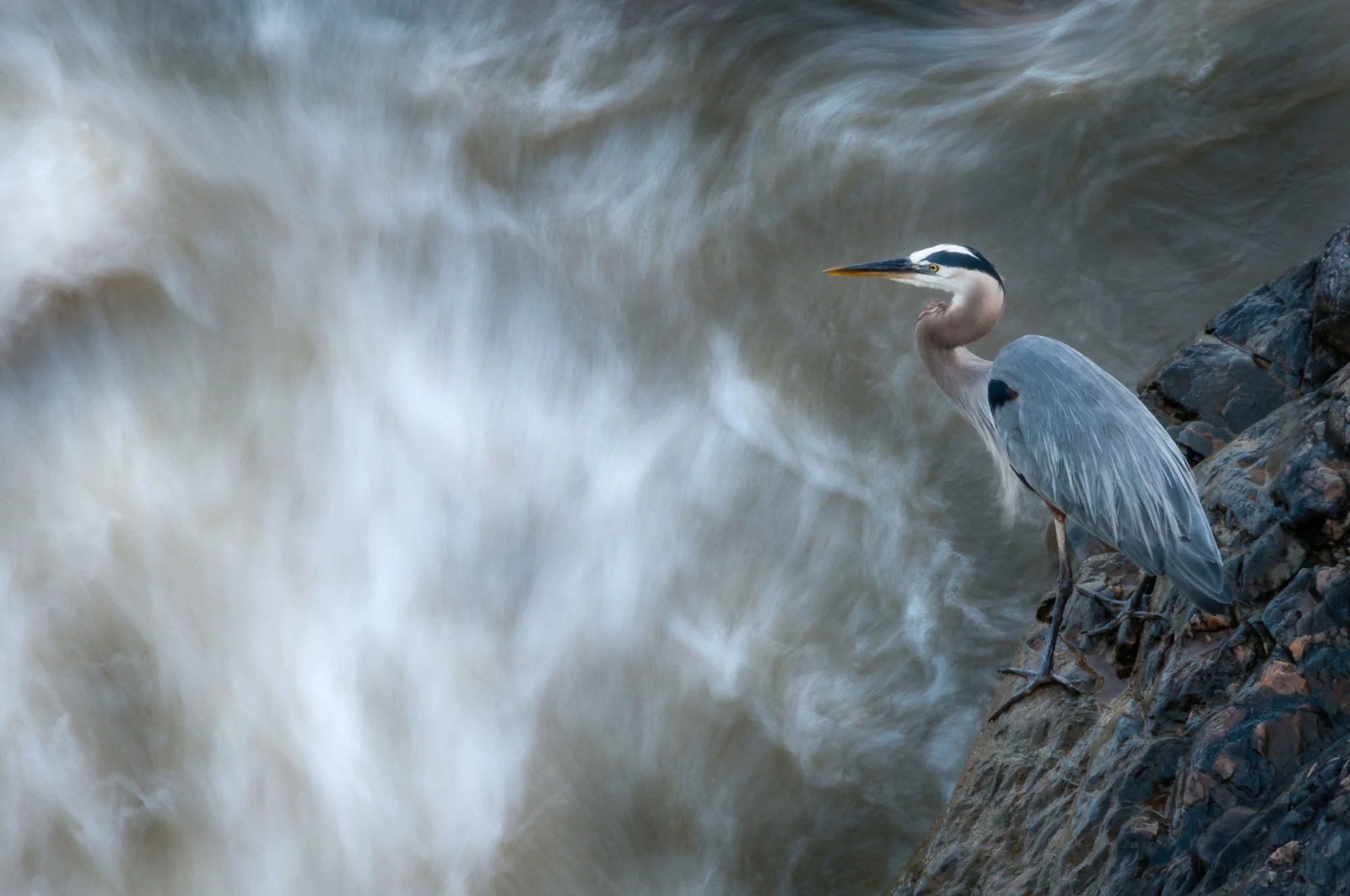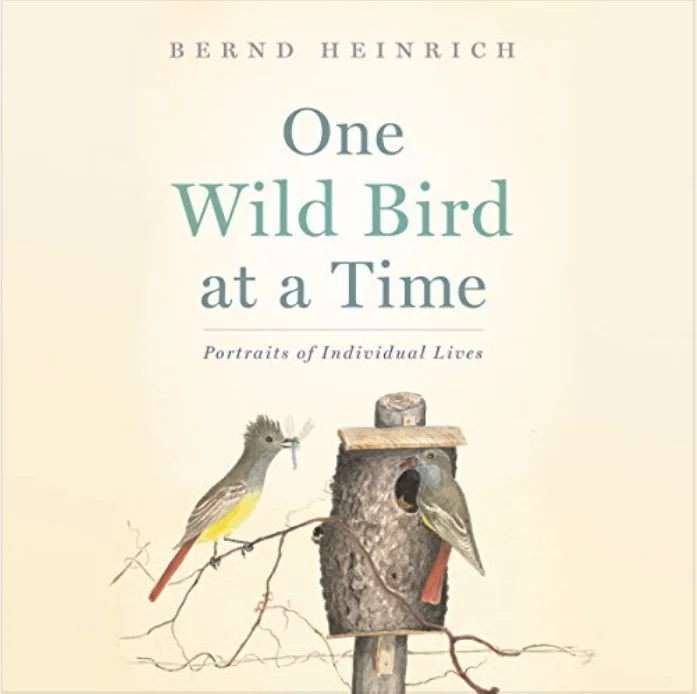Front angled view of an eastern American toad
I’ve mentioned before to look down once in a while when hiking in the woods, that you never know what you might see. In this case we saw an eastern American toad almost hidden on the trail. These are fairly common in this area, but it’s still always great to see one, especially when it’s patient enough to let me photograph it.
We found this toad in a wetlands park on a trail through woods that border the wetlands. A perfect environment for it, but being in the woods it was fairly dark. So I had to boost my ISO to 2000 - 4000 to have a fast enough shutter speed, and even with that these photos were shot between 1/25 and 1/40 of a second. This toad was fairly calm, though, which made things a little easier. It’s always nice having a cooperative subject.
Side view of an eastern American toad
I tried to photograph it from a variety of angles to capture as many details as I could for later identification. I’m not an expert at identifying wildlife so I’m always trying to learn more, and one thing I’ve learned is to capture as many details as possible while in the field. In this area the American toad can be confused with the Fowler’s toad, and apparently these species can hybridize, which makes a positive identification more challenging.
After consulting several field guides and online resources I believe this to be an American toad. It has a single wart in most of the dark patches on its back, which is indicative of an American toad. Fowler’s toads tend to have 3 to 7 warts in each patch. In the front view you can see some dark spots on its underside, again indicative of an American toad.
Back view of an eastern American toad
If you think I’ve misidentified this toad please leave a comment and let me know what you think it is and why. Thanks.
Resources
The resources below contain affiliate links and I will be compensated if you make a purchase after clicking on my links. This is at no extra cost to you.
Websites
Virginia Herpetological Society
Books
I own the following 3 books, though my editions may be older than those shown. I love Charles Fergus’ book, Wildlife of Virginia and Maryland and Washington, D.C. It’s not a field guide and only contains drawings of some of the wildlife, but it has lots of information on the species that live in this area. The Peterson and Audubon Field Guides are my current go to guides.



